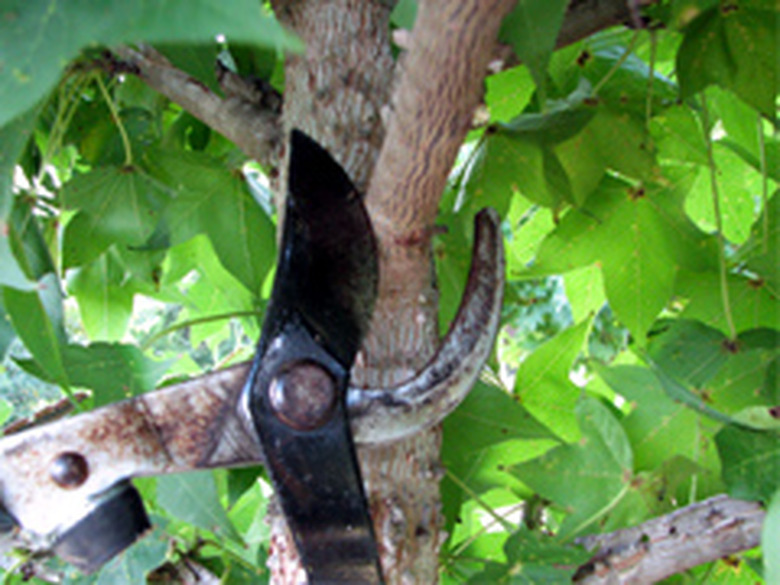How To Prune Sweetgum
Things Needed
- Pruning tool
- Garden gloves
- Safety glasses
- Pruning paint
Tip
Only trim trees more than 2 years old. Small, young trees need side growth for wind protection. Never "top" the tree or cut out the "leader" (or main branch) growing in the middle of the tree. This will result in excessive weak growth and ruin the shape of the tree. Sweet gums have a natural pyramidal shape when young, so keep pruning to a minimum unless tree limbs are creating a nuisance. Plant sweet gum trees at least 50 feet from power lines, structures and driveways.
Warning
If tree is interfering with a power line or tall structure, seek professional help and advice. Electricity is easily carried through sap-filled or damp tree limbs. Suckers that grow around the base are attached to the main plant below-ground. Adding weed killer to eliminate suckers will kill the tree.
The sweet gum tree (Liquidambar styraciflua) is a fast growing shade tree with a pyramidal shape native to the Southeastern U.S. Although it can grow up to 100 feet tall, it averages 60 feet tall with a 40-foot spread. Sweet gum trees are known for their spectacular fall color, corky bark, and spiky seed balls. The seed balls appear when the tree is 15 to 20 years old and are a nuisance to some, but are a valuable source of food for wildlife.
Step 1
Look at tree from a distance of 50 or more feet and determine what limbs need to be cut in order for tree to look healthy and symmetrical.
Step 2
Cut smaller limbs or suckers that are growing from the root base to below the ground level.
Step 3
Prune and remove dead limbs, or limbs that are rubbing together or have insect damage.
- The sweet gum tree (Liquidambar styraciflua) is a fast growing shade tree with a pyramidal shape native to the Southeastern U.S.
- Although it can grow up to 100 feet tall, it averages 60 feet tall with a 40-foot spread.
- The seed balls appear when the tree is 15 to 20 years old and are a nuisance to some, but are a valuable source of food for wildlife.
Step 4
Cut larger limbs to the collar where they meet the trunk of the tree up to the desired height. Cutting limbs flush with the tree will delay the trees ability to heal and allow undesirable insects to enter the tree.
Step 5
Step back and look at the tree to see if it is now the desired shape. Resume pruning if needed.
Step 6
Spray cut areas with pruning paint to protect wounds from insects.
